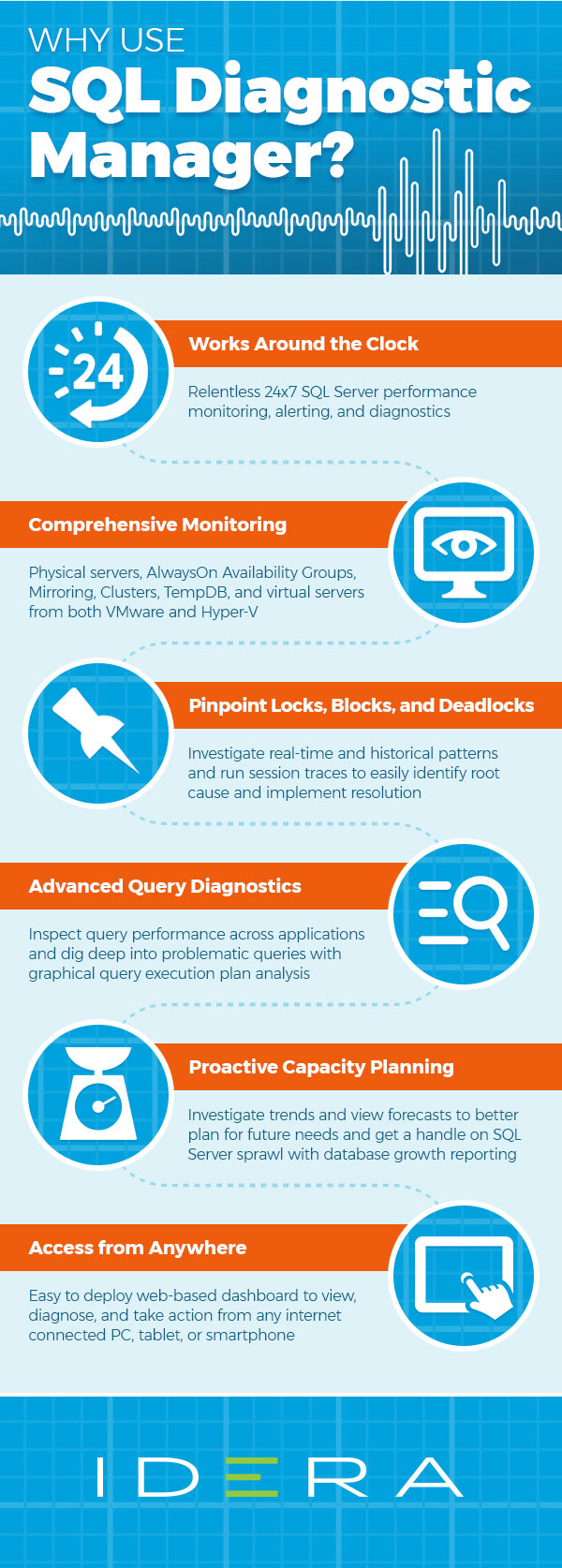
Transcript
Why use SQL Diagnostic Manager?
Works around the clock: Relentless 24×7 SQL Server performance monitoring, alerting, and diagnostics.
Comprehensive monitoring: Physical servers, Always On availability groups, mirroring, clusters, tempdb, and virtual servers from both VMWare and Hyper-V.
Pinpoint locks, blocks, and deadlocks: Investigate real-time and historical patterns and run session traces to easily identify root cause and implement resolution.
Advanced query diagnostics: Inspect query performance across applications and dig deep into problematic queries with graphical execution plan analysis.
Proactive capacity planning: Investigate trends and view forecasts to better plan for future needs and get a handle on SQL Server sprawl with database growth reporting.
Access from anywhere: Easy to deploy web-based dashboard to view, diagnose, and take action from any internet-connected PC, tablet, or smartphone.
For more information, please refer to Datasheet: SQL Diagnostic Manager for SQL Server .
See Also:
- Whitepaper: Performance Enhancements Made with SQL Server 2014
- Whitepaper: Top 5 New Features of SQL Server 2014
- Webcast: Career-Changing Features in SQL Server 2019
- Webcast: SQL Server 2017 – It Just Gets Faster
Topics : Database Diagnostics,Database Monitoring,Database Performance,SQL Query Performance,
Products : SQL Diagnostic Manager for SQL Server,
Why Use SQL Diagnostic Manager?
SQL Diagnostic Manager is a comprehensive SQL Server database performance monitoring tool for physical servers, virtual servers (VMWare and Hyper-V), and cloud environments. It investigates real-time and historic patterns and identifies root causes to help implement resolutions.
With SQL Diagnostic Manager you can monitor AlwaysOn Availability Groups, get an overview of the health of your TempDB database, analyze all the tables and indexes on a particular database, and monitor the mirrored databases. With SQL Diagnostic Manager, DBAs are able to set alert thresholds on built-in statistical analysis and check the status of monitored server instances to identify and diagnose issues. SQL Diagnostic Manager features a simple web-based dashboard that gives DBAs at-a-glance views of top issues and alerts so they can stay on top of their SQL Server databases. Learn More →